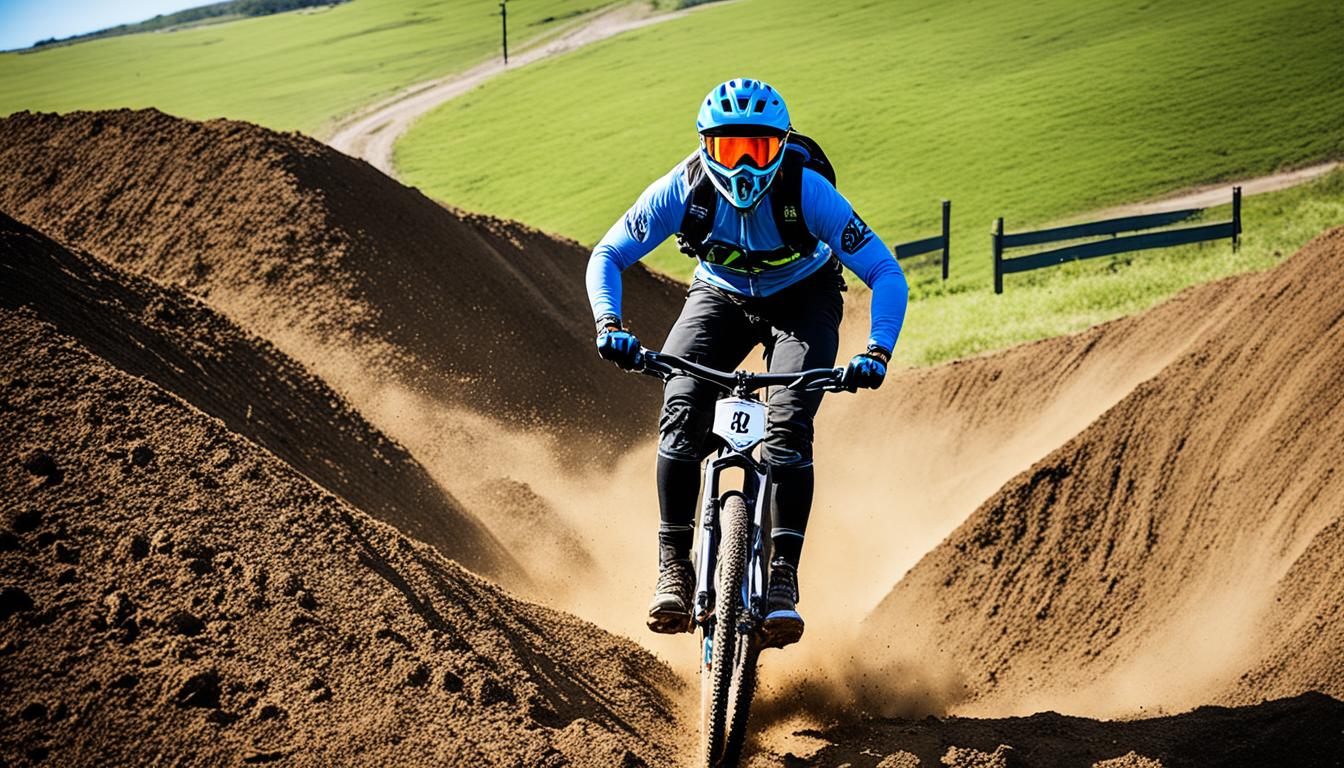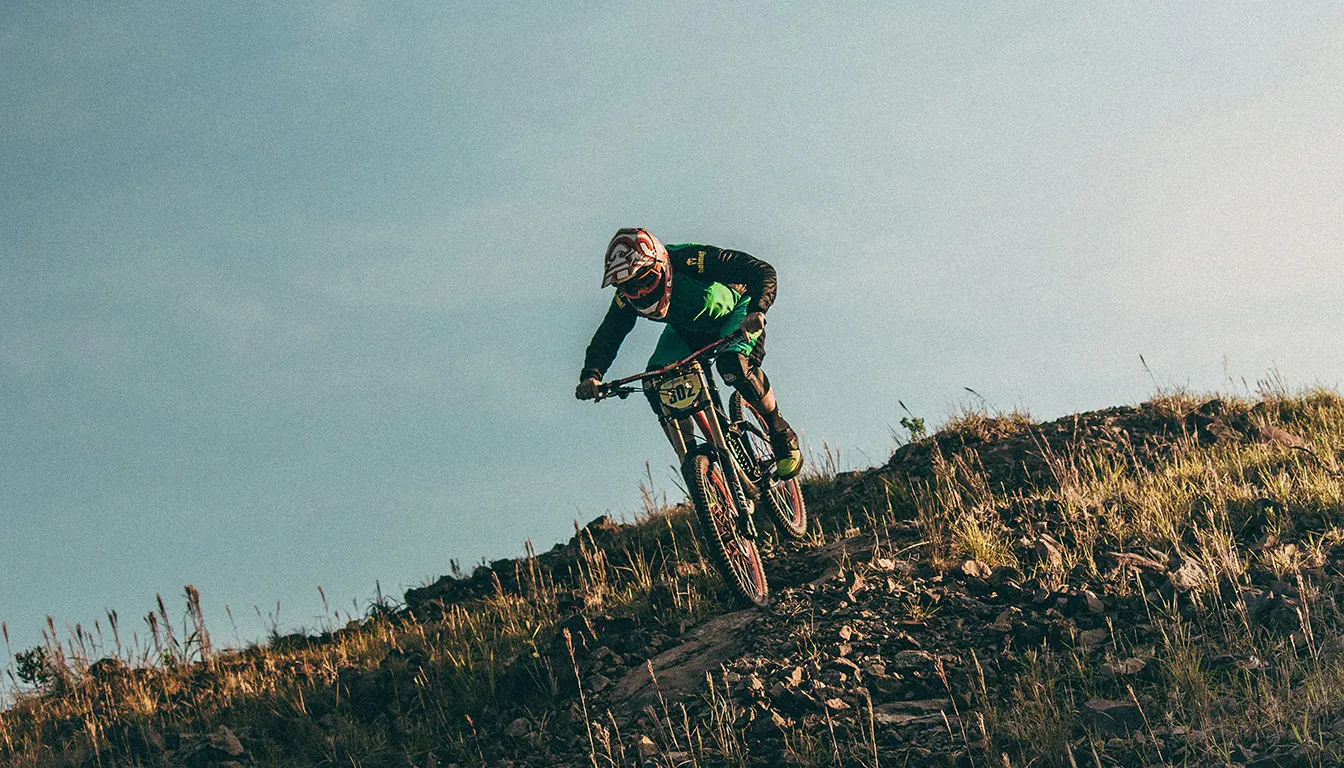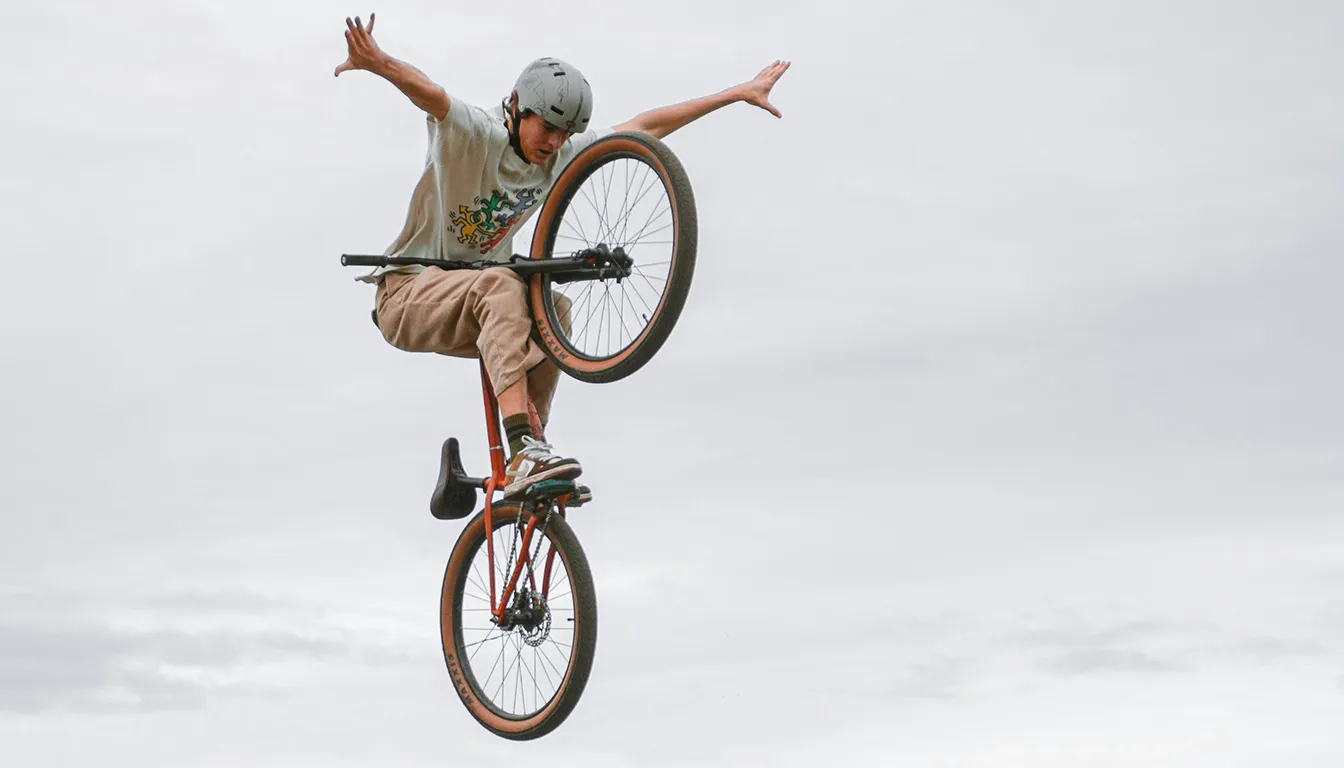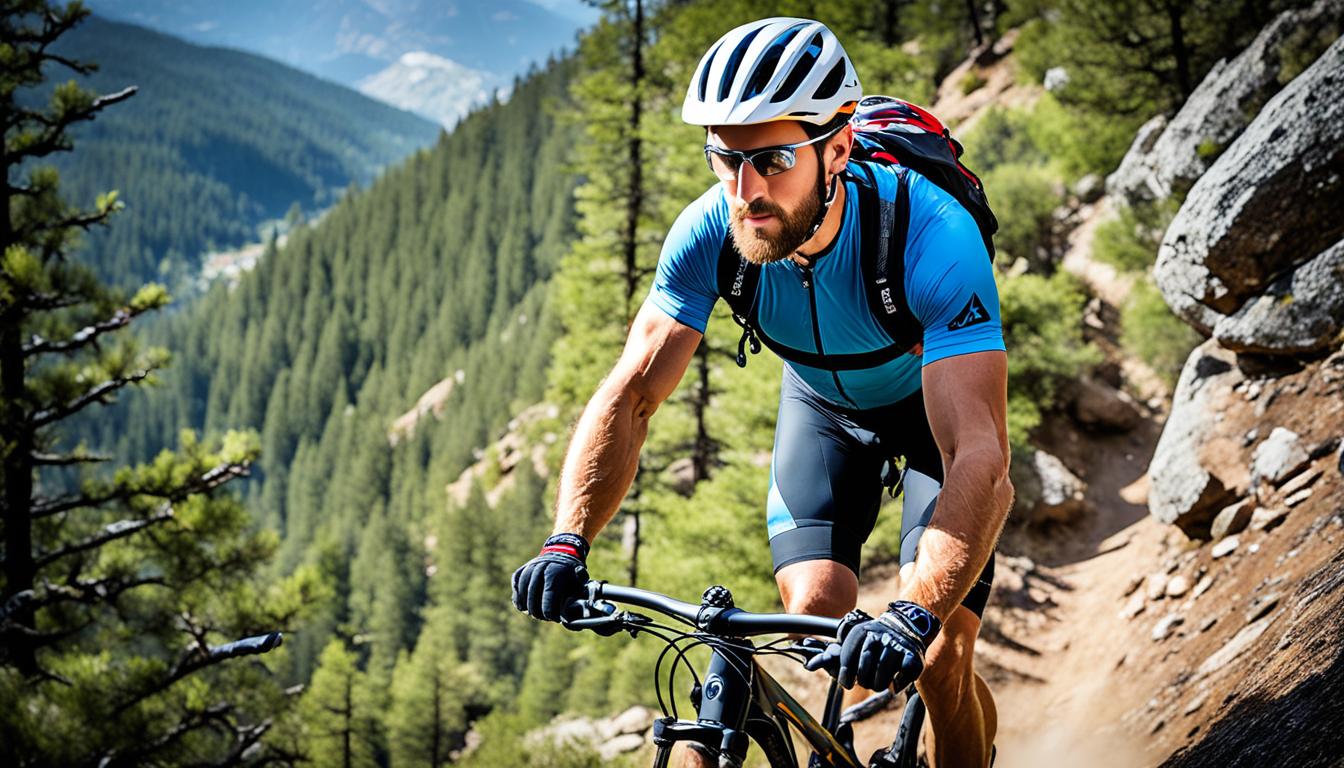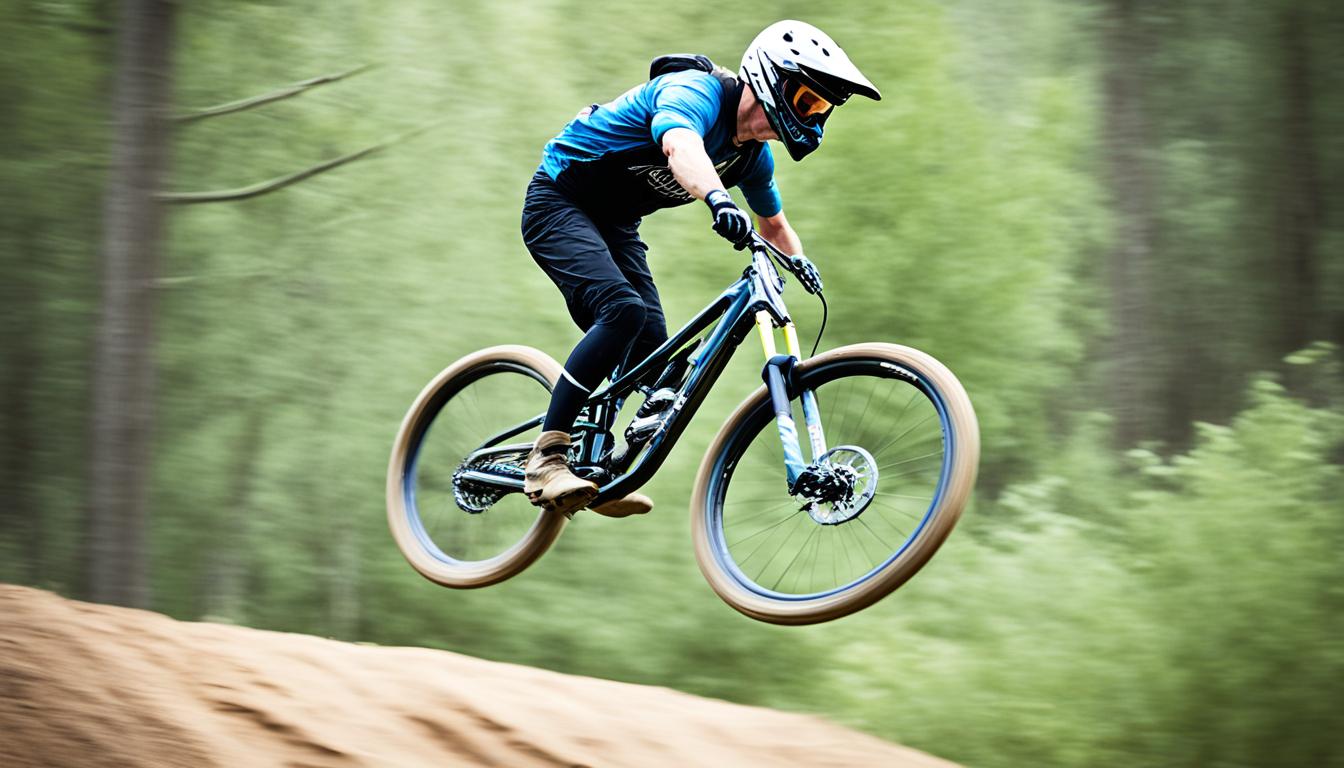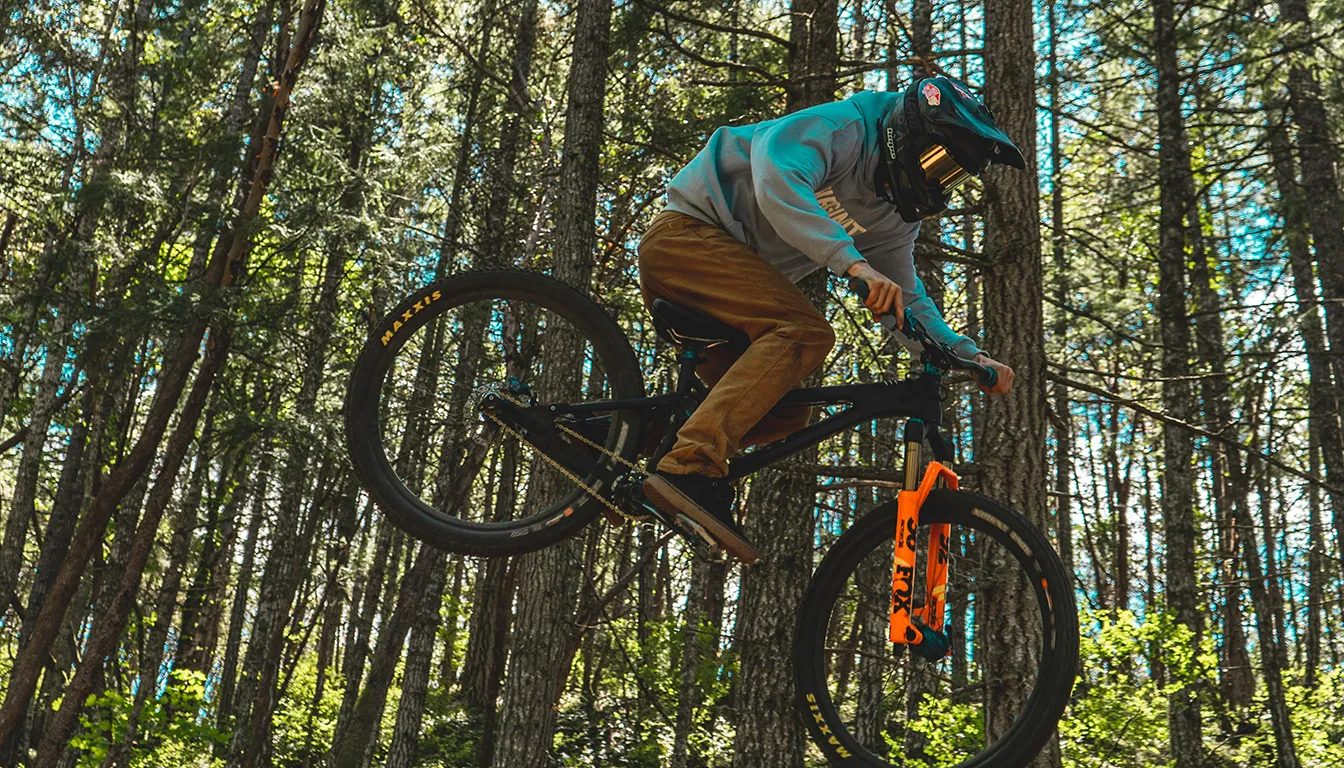Dirt jumping is thrilling, but it comes with risks. This article provides dirt jumping safety tips everyone needs. We’ll cover proper safety gear and the best bike setup. These jump safety essentials are key for any dirt jumper.
Having the right bike safety gear is crucial. Also, know your bike well and learn the best techniques for jumping. Knowing trail manners creates a good vibe among riders. Following these tips and learning from pros, as seen in freeride mountain biking training, enhances your dirt jumping experience.
The Importance of Safety Gear for Dirt Jumping
For anyone into dirt jumping, knowing the value of safety gear is key. Quality gear can greatly lessen injury risks. It can make your riding better too. Understanding your equipment is a big part of being safe and feeling confident.
Choosing the Right Helmet
The importance of helmets for dirt jumping can’t be understated. A top-notch helmet can protect your head during crashes. These accidents happen oft in the sport. Riders have a choice between open-face and full-face helmets. The full-face ones offer more safety. It’s vital to choose a helmet that fits well and is comfortable. This means riders worry less about gear and more on their technique. Picking a well-known brand is advisable for better safety. For extra help on picking helmets, check out this guide.
Protective Padding: Knees and Elbows
Pads for knees and elbows are crucial. They absorb impacts and stop grazes when you fall. These pads do more than protect; they boost confidence for trying harder jumps. There are many styles to choose from. They all offer safety without losing comfort. Picking top-quality protective gear is key for a good dirt jumping experience.
Footwear for Better Control
Good riding shoes are a must for better control on jumps. Shoes with stiff soles help support and grip on pedals. This helps with power, balance, and doing better jumps. A solid connection to the bike aids in handling different paths. It’s important to choose top-notch footwear for safety and effectiveness.
Understanding Your Bike Setup
Getting your bike setup right can really uplift your dirt jumping fun. Knowing about your dirt jump bike’s frame and parts helps a lot. It makes you perform better and keeps you safe.
The Role of Bike Specifications
The correct bike specs are key for top-notch handling on jumps. Things like the length of the bike and its shape matter a lot. For example, bikes with a shorter length are easier to control in the air.
Choosing the right frame is also vital. For different skill levels, the Trek Ticket DJ at £950 and the Specialized P.4 at £700 are good choices. It’s important to pick a frame that suits your riding style. This way, you get the most out of your jumps.
Regular Maintenance Checks
Keeping up with regular bike maintenance checks is important. Doing so keeps your bike running well and safely. Here are some tips:
- Regularly check your brakes to make sure you can stop safely.
- Make sure all bolts and screws are tight. This stops them from coming loose when you ride.
- Keep an eye on your tire pressure for the best grip and comfort.
- Look after your chain and drivetrain, checking for wear and if they need oil.
By following these tips, you extend your bike’s life. Plus, you ensure a more enjoyable and secure dirt jumping experience.
Dirt Jumping Safety Tips
Dirt jumping is thrilling, yet safety is key. Follow key safety tips to lessen injury risks. Knowing the ground and warming up are crucial for safety.
Start with Smaller Jumps
New riders should start on small jumps. This builds confidence and skills safely. It’s a safe way to learn, cutting accident risks.
Become skilled at easier levels first. Then, move to bigger challenges. Experts suggest starting simple to stay safe.
Know the Terrain Before You Ride
It’s vital to know the area you’re riding in. Understanding the terrain prevents surprises like unexpected jumps. Being familiar with trails helps in making smart choices.
The Importance of Warming Up
Warming up your muscles before jumping is essential. It can lower the chance of getting hurt. Riders see better performance and control after warming up.
A good warm-up leads to better jumps. Spend enough time preparing. It can make your riding experience exciting and safer.
Techniques for Successful Jumping
Mastering jumping arts is vital for dirt jumpers aiming to improve. It relies on key elements like body positioning for jumps, timing, and landing skills. Find essential techniques for mastering your skills in this article.
Correct Body Positioning
Riders need a neutral stance before jumping. This means elbows and knees should be slightly bent. Weight must be centred over the bike. This stance aids control in the air and reduces impact when landing.
Timing Your Approach
Managing speed is crucial for approaching jumps. Riders should accelerate just enough to gather momentum. It’s key to balance speed to clear jumps well. Testing different speeds can help find the best approach for you.
Practicing Your Landing
Good landing skills prevent falls and injuries. Shifting weight back helps with smoother landing. Always look at where you want to land. Adapting your landing to the jump type is important for safety.
Joining a Jumping Fundamentals Mini-clinic offers focused learning and feedback. Using technique guides is great for ongoing practice. Advancing through different jumps will boost your skills significantly.
Respect for Trail Etiquette
Dirt jumping is more than a solo skill. It requires a strong respect for trail rules and a dedication to the biking community. Knowing how trails work makes rides more enjoyable for everyone.
Understanding Builder Permissions
Getting permission from trail builders is essential before using their paths. This shows appreciation for their effort. It also makes the biking community stronger. Acknowledging the hard work put into maintaining jump trails builds a caring and cooperative culture among riders.
Keeping the Trails Clean and Well-Maintained
Helping to keep our trails clean is key to good trail manners. Riders should clean up their own rubbish and pick up any litter they see. This shows great respect for our shared spaces, making them nicer for all.
By doing these things, we spread kindness. It encourages others to do the same, keeping our trails in top shape.
Conclusion
Dirt jumping is thrilling for both beginners and experts. Remember, safety is key to enjoy this adventure to the max. Use the right safety equipment, know how your bike works, and follow community rules for a fun ride.
Choosing a strong helmet and checking your dirt bike often are part of safe riding. These steps help you ride safely and have fun. The real joy of dirt jumping is not just in the jumps. It’s about building a culture that values safety and friendship.
Keep these tips in mind as you dive into dirt jumping. Focus on safety and your gear. This way, you’ll get better and enjoy the sport’s thrills. So, put on your gear, hit those jumps, and remember: safety first!
FAQ
What type of helmet should I wear for dirt jumping?
Picking the right helmet is crucial. Go for a full-face helmet. They offer the best protection and can greatly reduce head injury risks during falls.
Do I really need protective padding while dirt jumping?
Absolutely, knee and elbow pads are a must. They soak up the shock from falls. This gear keeps you safe and boosts confidence on tough jumps.
What kind of footwear is best for dirt jumping?
Choose shoes with stiff soles and good grip. Mountain bike shoes with flat pedals are best. They improve your control and keep you balanced.
How can I understand my bike’s specifications?
Get to know your bike’s wheelbase and geometry. This knowledge will improve your handling. It makes a big difference on jumps.
How often should I perform maintenance checks on my bike?
Keep a routine maintenance check. Make sure your brakes work well, bolts are tight, and tires are properly inflated. It ensures safety and a smooth ride.
What should I do as a beginner before attempting bigger jumps?
Start with small jumps. This builds your confidence and technique. It’s a safer way to learn and grow your skills.
Why is it important to know the terrain before riding?
Knowing the terrain prevents nasty surprises. It helps avoid accidents. You make safer choices and ride better.
How does warming up help with dirt jumping?
A good warm-up gets your body ready for action. It lessens injury risks. Always warm up before jumping.
What is the correct body position for jumps?
Keep a neutral stance. Bend your elbows and knees slightly. Stay centred over the bike. This helps you control your airtime better.
How should I time my approach to jumps?
Getting your speed right is key. Aim for controlled acceleration. It keeps you balanced and ensures a successful jump.
What techniques should I practice for landing safely?
For safe landings, lean back as you come down. Focus on where you want to land. It helps you touch down smoothly and avoid falls.
Do I need permission to ride on private trails?
Yes, always ask trail builders for permission. It shows respect and helps keep a good relationship with the biking community.
How can I help maintain the trails I ride on?
Help with upkeep and pick up trash after your rides. It’s good for the environment and respects shared spaces.
